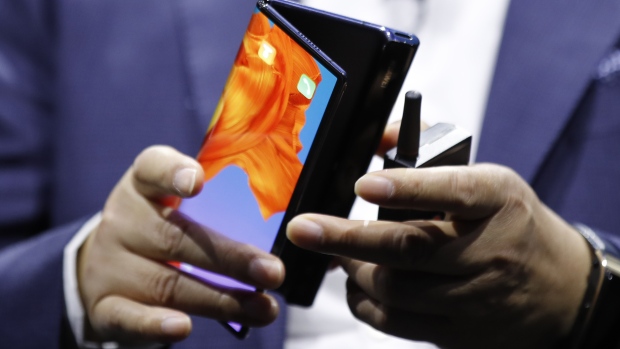Mar 7, 2019
A $2,000 phone won’t cure an industry’s midlife crisis
, Bloomberg News

I’m one of those people who is bored with most new smartphone features and functions. Augmented reality?! Meh. Anthropomorphic animations?! No, thanks. Facial recognition?! Pass.
But I am genuinely intrigued by the coming versions of smartphones with folding screens. Yes, these devices from Samsung Electronics Co. and others are going to be outrageously expensive for a while, and I assume early models will be too flawed for normal humans. Eventually, though, I can imagine it will be useful to own a smartphone with a thin glass screen that bends, or one that unfurls to a larger display when I want to watch a movie. (I would also be happy with a shatterproof phone and a battery that lasts for days without a recharge.)
That’s my measured enthusiasm for the gadget future as a technology consumer. As a tech business writer, however, I’m not optimistic about the ability of folding phones and other innovations, including faster 5G wireless connections, to kick-start moribund smartphone sales.
Bloomberg’s digital pages are filled with tales of peak smartphone. New device sales have started to decline, because fewer people are buying their first smartphone and, on average, existing owners are buying new models less often.
There are economic hiccups in China and elsewhere that contributed to a 4.1 per cent dip in new smartphone shipments last year. But the broader trend is a market getting closer to saturation, which makes it tough for companies like Apple Inc. and Samsung to keep increasing their smartphone sales. There are about 5.9 billion mobile broadband internet connections out of a global population of 7.5 to 8 billion people, according to telecom equipment maker Ericsson AB.
The next generations of ultra-luxe folding smartphones or 5G devices won’t be able to overcome gravity in a market where much of the natural growth is gone, even if they prove compelling enough to prompt some users to trade up more quickly. That might make device sales grow again by a couple or few percentage points each year, but it won’t flip the market’s trajectory from bland to hot.
The reality is that smartphones are getting close to ubiquitous in many countries, and it’s harder to reach the next two or three billion people who have never owned one of the devices. Those dynamics make it tough to forecast anything better for the smartphone market than slow-and-steady growth like the economies of developed countries.
It’s fun to talk about and imagine the cool new smartphone forms and functions that might excite bored tech consumers like me. Smartphones are a valued part of our lives and we should want them to get faster, easier to use, longer-lasting and more fun.
I resolve, though, to keep that realist tech writer portion of my brain firing. No matter how cool a smartphone gets, it’s tough to turn back time now that the industry has hit middle age.
A version of this column originally appeared in Bloomberg’s Fully Charged technology newsletter. You can sign up here.





